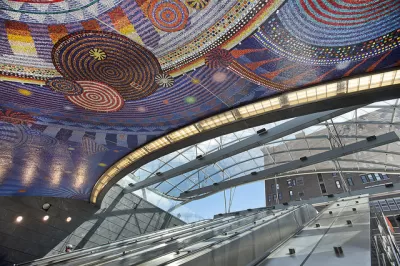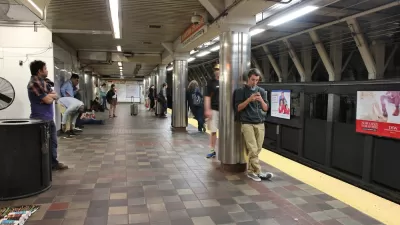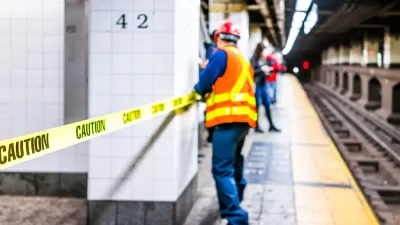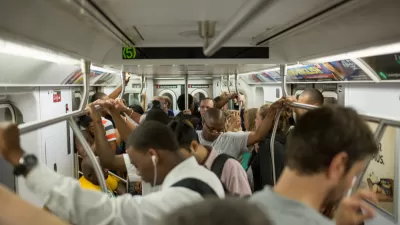It's important for transit to look and feel nice, if only to resurrect its deeply tarnished image in the United States. But ridership depends on good service, not good aesthetics.

For transit riders, beautiful stations and convenient amenities are very welcome. But Yonah Freemark makes an important point about bloated costs. "Anyone who has ever ridden the [New York] Subway knows first hand that its success has nothing to do with aesthetics or access to luxury amenities. Stations are hardly in good shape, trains are packed, and cell service is spotty at best. People ride the Subway in spite of these things; they ride it because it's fast, it's frequent, and it's (relatively) reliable."
When decision-makers favor sleek 21st-century monumentalism, costs soar and service doesn't necessarily improve. "New York's own $4 billion World Trade Center Transportation Hub—perhaps the world's single-most expensive station—is evidence of that; rather than improve service frequency or speed, officials chose to direct public funds to a white monument that does nothing to actually ease the lives of daily commuters."
Freemark cites a recent proposal by Boston's MBTA to cut expenses for its Green Line extension. Simple measures to reduce station sizes and cut out excess canopies and escalators save an impressive $300 million. Other tactics could increase that figure substantially.
Regardless, says Freemark, American transit agencies have been unable to reduce build costs to international standards. Until we can do that, perhaps we should focus on what commuters really care about.
FULL STORY: Frequent service, not escalator access, is what attracts transit users

Alabama: Trump Terminates Settlements for Black Communities Harmed By Raw Sewage
Trump deemed the landmark civil rights agreement “illegal DEI and environmental justice policy.”

Planetizen Federal Action Tracker
A weekly monitor of how Trump’s orders and actions are impacting planners and planning in America.

The 120 Year Old Tiny Home Villages That Sheltered San Francisco’s Earthquake Refugees
More than a century ago, San Francisco mobilized to house thousands of residents displaced by the 1906 earthquake. Could their strategy offer a model for the present?

In Both Crashes and Crime, Public Transportation is Far Safer than Driving
Contrary to popular assumptions, public transportation has far lower crash and crime rates than automobile travel. For safer communities, improve and encourage transit travel.

Report: Zoning Reforms Should Complement Nashville’s Ambitious Transit Plan
Without reform, restrictive zoning codes will limit the impact of the city’s planned transit expansion and could exclude some of the residents who depend on transit the most.

Judge Orders Release of Frozen IRA, IIJA Funding
The decision is a victory for environmental groups who charged that freezing funds for critical infrastructure and disaster response programs caused “real and irreparable harm” to communities.
Urban Design for Planners 1: Software Tools
This six-course series explores essential urban design concepts using open source software and equips planners with the tools they need to participate fully in the urban design process.
Planning for Universal Design
Learn the tools for implementing Universal Design in planning regulations.
Clanton & Associates, Inc.
Jessamine County Fiscal Court
Institute for Housing and Urban Development Studies (IHS)
City of Grandview
Harvard GSD Executive Education
Toledo-Lucas County Plan Commissions
Salt Lake City
NYU Wagner Graduate School of Public Service





























